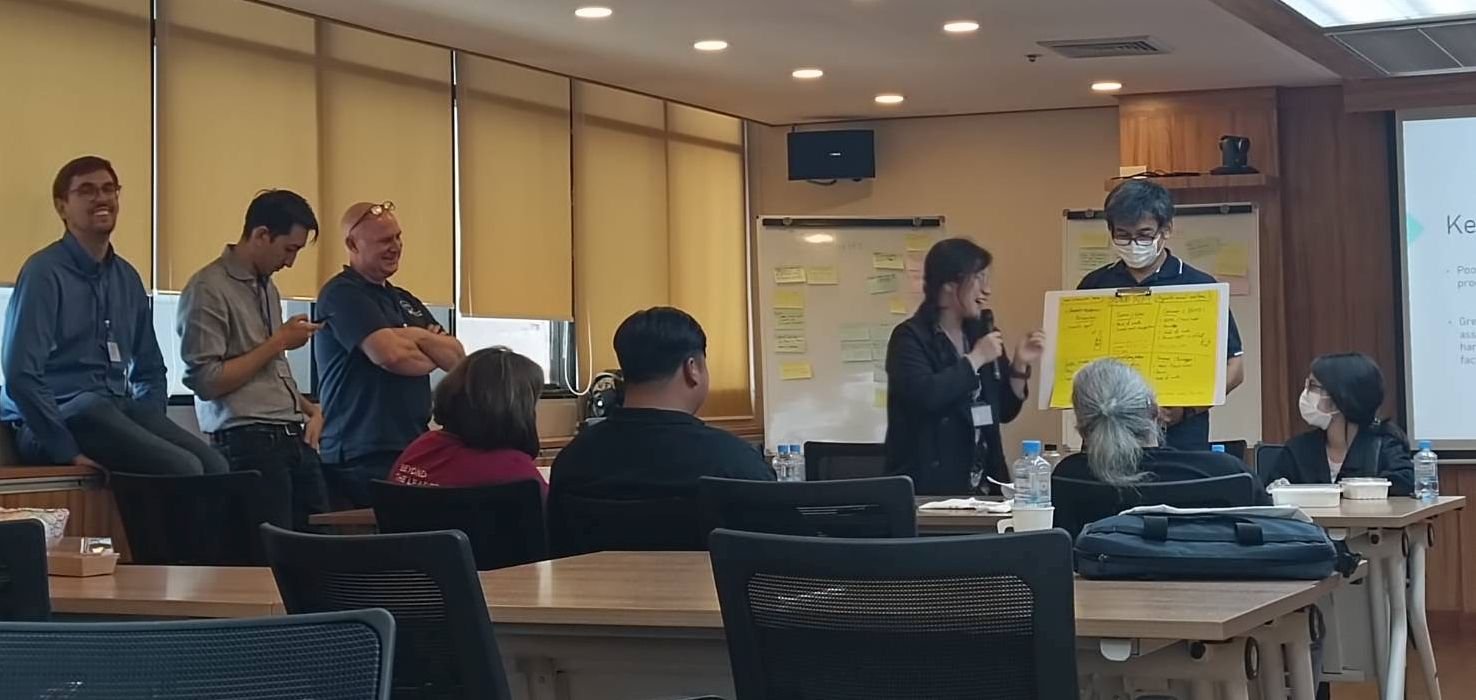Hello again everyone! I’m Arnan Hirunratanakorn. My previous blog has stated the results and finding of my project “Bridging Gaps in Aquaculture: A Field study on Economics and Fish Welfare in Thai Markets”, which is a part of Improving Farmed Fish Welfare in Asia Project, funded by Open Philanthropy.
Video: Arnan Hirunratanakorn presents his research findings and recommendations
Project Limitation and Improvement
This study aimed to investigate practices across the value chain as comprehensively as possible. The gap remains on fish that go directly from farm to retail markets for which data have not been collected. Also, it would be interesting to study catfish and snakehead focusing on their harvesting practices, transportation methods, pricing and distribution method. This could provide a more complete picture of freshwater aquaculture value chain.
Additionally, the sample size in this study may show the trends but may not provide enough data for definitive conclusions. An increase the sample size would result in more accurate data and help identify additional trends that were not found in the current data set.
Arnan Hirunratanakorn visiting distribution market for data collection
Idea of Improvement, Potential Societal Impact
I have come up with some ideas that we can implement to improve fish welfare in Thai markets.
Firstly, as reported earlier, Thai people are already aware of fish suffering, but fish welfare is not part of their daily experience or practices. A campaign to raise awareness about fish welfare through television advertisement, social media, supermarkets and markets could help to integrate welfare considerations into their daily life. Introduction of iconic catchphrases about welfare, could integrate welfare thinking into everyday speech. Making people think about fish welfare influences their purchase and consumption decisions.
Secondly, to develop certifications for good welfare practices through the value chain, allowing stakeholders that treat the fish humanely to be recognized to customers. Also, implementing fish welfare labelling, that can inform customers to choose products with better welfare.
Thirdly, regarding fish releasing as an act for merit for Buddhists in Thailand, this action can harm the ecosystems if not properly done. A study has found that people with higher ecological knowledge, reduce the release of invasive species into the ecosystems, The ecological knowledge could be directly focused on fish releasing individuals on social media by influencers that are famous in Buddhism, aired on religion television channels or even included in school for new generations which could help raise long-term awareness. Additionally, partnerships with vendors in markets to distribute information cards with recommendations on suitable locations and species for release, targeting directly those who buy fish for this purpose.
Fourthly, organize workshops or on-site training on humane slaughter methods for retailers, as the study has found that percussive stunning is the most common stunning method in Thai markets, but that sometimes the method is not very effective on catfish due to their hard skull. There are a few retailers that kill catfish with pithing, which gives a quick and easy death, but most retailers are not aware of this method.
Research Welfare Training Workshop in Thailand in “Improving farmed fish welfare in Asia project”
Further Research Directions
Further research is needed to investigate customer preferences as they may be the key drivers for changes in market practices. A deeper understanding of customer preferences and the reasons behind their decisions when buying a fish may help identify the gap and to change customer perception to consider fish welfare as one factor before they bought a fish.
Also, understanding fish releasing beliefs, feelings and decision processes could offer new insights into how good welfare practices might be integrated into these acts of merit.
Lastly, studying species specific knowledge for each practice in the markets would allow markets to implement suitable practices for each species and improve overall welfare in the market.
Ending
Thank you everyone for reading to the end. If you have any suggestion or want to discuss the findings or related topics, feel free to contact me at arh00062@student.stir.ac.uk


